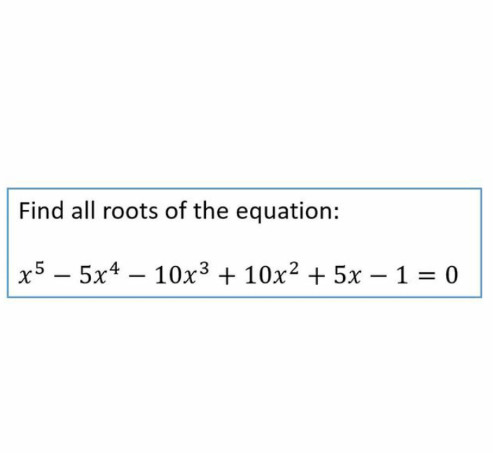
AlgebraQuestion and Answers: Page 231
Question Number 127090 Answers: 4 Comments: 0
Question Number 127006 Answers: 1 Comments: 0
Question Number 126990 Answers: 1 Comments: 0
Question Number 126989 Answers: 1 Comments: 0
Question Number 126966 Answers: 0 Comments: 2

Question Number 126952 Answers: 3 Comments: 1
Question Number 126950 Answers: 1 Comments: 0

Question Number 126935 Answers: 0 Comments: 0
Question Number 126931 Answers: 1 Comments: 0
Question Number 126930 Answers: 1 Comments: 4
$$\:\:\sqrt{\mathrm{1997}×\mathrm{1996}×\mathrm{1995}×\mathrm{1994}+\mathrm{1}}\:=? \\ $$
Question Number 126887 Answers: 2 Comments: 2
Question Number 126882 Answers: 1 Comments: 0
Question Number 126845 Answers: 3 Comments: 0
Question Number 126723 Answers: 0 Comments: 2

Question Number 126702 Answers: 1 Comments: 0
Question Number 126701 Answers: 2 Comments: 0
Question Number 126700 Answers: 2 Comments: 0
Question Number 126619 Answers: 2 Comments: 0
Question Number 126504 Answers: 0 Comments: 0

Question Number 126484 Answers: 0 Comments: 6

Question Number 126482 Answers: 1 Comments: 0

Question Number 126430 Answers: 3 Comments: 1
Question Number 126391 Answers: 3 Comments: 0
Question Number 126363 Answers: 2 Comments: 0
Question Number 126329 Answers: 1 Comments: 0

Question Number 126180 Answers: 2 Comments: 0
$${solve}\:\mid\:\mid{x}−\mathrm{1}\mid\:−\mathrm{2}\mid\:=\:\mid\:{x}−\mathrm{3}\:\mid\: \\ $$
Pg 226 Pg 227 Pg 228 Pg 229 Pg 230 Pg 231 Pg 232 Pg 233 Pg 234 Pg 235
